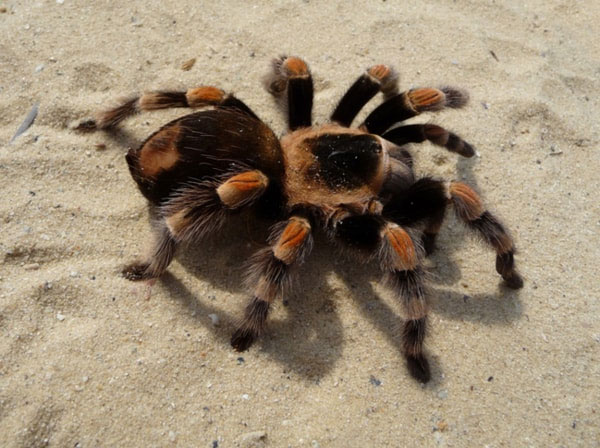Tarantula spiders are considered a true “house addict” when the female rarely leaves the cave, the young spiders follow where they hatch, and the adult male only budges when looking for a mate. However, this family of spiders can be found all over the world, living on every continent except the Antarctic continent. How did they become so popular?
To answer this question, the researchers traced the Tarantula family to over 100 million years ago, building the species’ family tree based on molecular clues from existing databases of transcription systems. .the spider code (the protein-coding part of the genome, found in ribonucleic acid or RNA).
After creating a family tree, they organized the Tarantula species according to the chronology of the fossils to estimate when and where the spiders appeared and dispersed.
Scientists have discovered that tarantulas first appeared in the Cretaceous Period in the Americas today. At that time, America was still part of the giant supercontinent of Gondwana. The ancient Tarentula spiders have proliferated in mainland regions, from the Americas to Africa, Australia and India. After that, the continent of Gondwana was split, India split from Madagascar and merged with Asia – bringing furry spiders to the continent.

Only two Tarantula fossils were found, both preserved in amber: one was from Mexico, about 16 million years old, the other from Myanmar and about 100 million, according to the authors. of the study.
Because the Tarantula fossil is so rare, the researchers also collected data on related spider species of the Mygalomorphae group – a group of spiders that includes the Tarantula spider and other large spiders.
After building a family tree from transcription data from 29 Tarantula species and 18 other Mygalomorph species, the scientists calibrated the species’ appearance times in the family tree using the chemotherapy data. This allows researchers to calculate the age of tarantula spiders and estimate when modern tarantula ancestors first spread around the world.
The story of the tarantula spider
According to researchers, Tarentula spiders first appeared in the Americas around 120 million years ago. The spider species is the ancestor of the tarantula spider in Africa that appeared about 112 million to 108 million years ago. Around 108 million years ago, the tarantula spider began to live in present-day India. India separated from Madagascar 95 to 84 million years ago and drifted towards Asia; This merger began 58 million to 35 million years ago, bringing the Tarantula species to the yellow-skinned continent.
However, before appearing in Asia, the Indian tarantula spider was divided into 2 groups with different lifestyles: the group mainly lived on trees and the group mainly lived in caves. The arboreal group called the Ornithoctoninae (also known as the ground tiger spider) developed in Asia 20 million years later than the group of burrowing spiders.

Saoirse Foley, head of research and evolutionary biologist at Carnegie Mellon University in Pittsburgh said: “In the past, we did not view tarantulas as species well adapted to the new environment, but the wide distribution of the whole. Two groups of spiders have made us rethink.
The growth and development of the Ornithoctoninae group in Asia has shown that Tarantula spiders are able to fill ecological niches and adapt well to new habitats. Its worldwide popularity is not based solely on continental drift.


